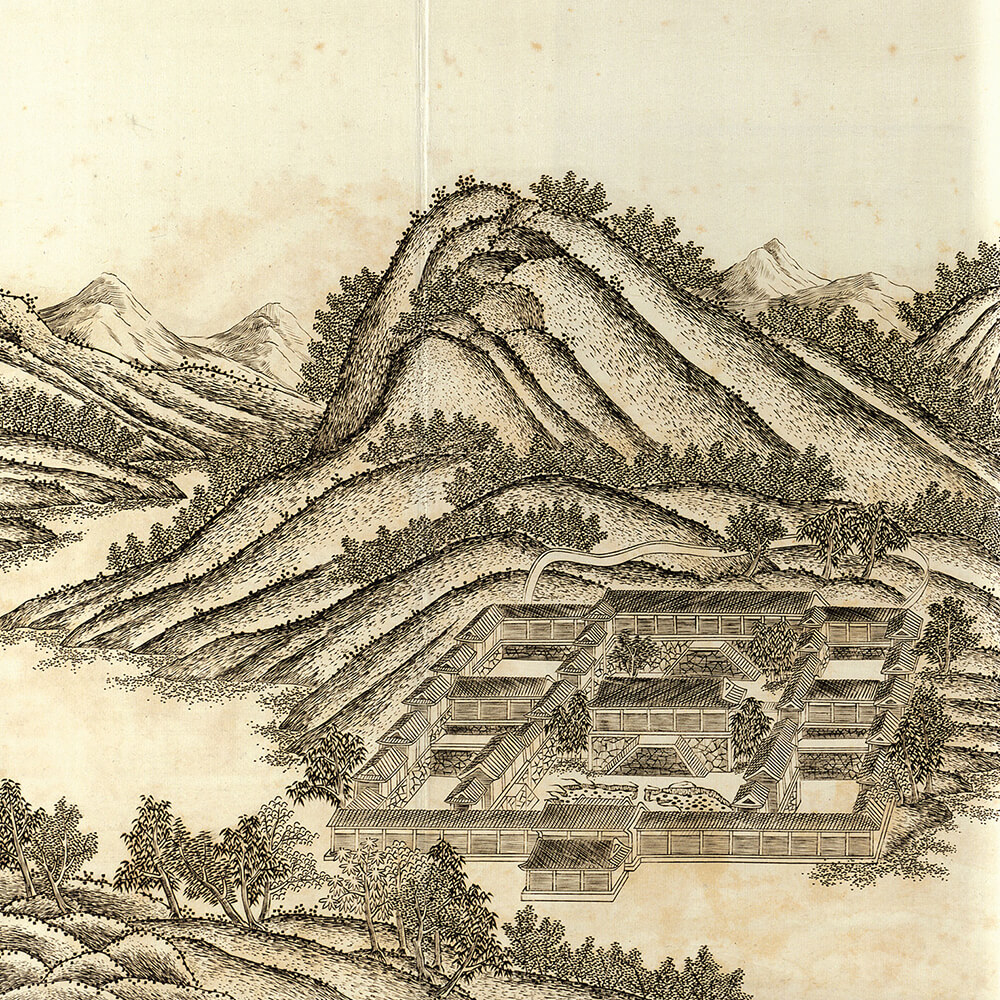Linguistic Diversity
The plaque on the Lizheng Gate, the main entrance to the Chengde Summer Resort, carries the name of the gate in five scripts - Manchu, Mongolian, Chinese, Tibetan, and Hui. When the Qing Empire was founded, Manchu, Mongolian, and Chinese were designated the official languages; later, with expansion of the Empire's territory, Tibetan (Tibetan/Tangut scripts) and Uighur were added. This linguistic diversity was a key feature of the Qing multi-ethnic state. In order to facilitate communication, the Qing court compiled a series of multi-lingual glossaries and publications. While the pre-eminence of the Manchu language and script was established in Qing linguistic policy, other ethnic groups were also able to continue to use their own languages and scripts.
Official Publications in Various Languages
After the Battle of Shanhai Pass in Manchuria during the Qing dynasty, Manchu and Manchu alphabets became the national language and the language used in books in China. Later, the Tibetan and Uyghur languages were also added as the official languages of the Qing dynasty. Accordingly, the Qing court compiled a series of official publications that translated the aforementioned languages to facilitate communication among the various ethnic groups. Concurrently, the court issued official decrees and spread relevant ideological knowledge, showing its intention to achieve cultural control.
Yuzhi Bishu Sanzhuang Shi Bingtu (Imperially Produced Collection of Poems for the Summer Resort, with Illustrations)
- Printed Manchu edition by the Imperial Printing Office at Wuyingdian Hall, 50th year of the Kangxi reign (1711), Qing dynasty
- Imprint in red and black by the Imperial Printing Office at Wuyingdian Hall, 6th year of the Qianlong reign (1741), Qing dynasty
In 1712, the Wuyingdian Hall of the Qing court printed and published the Yuzhi Bishu Sanzhuang Shi Bingtu in both Manchu and Chinese. The illustrations of the Chinese version of the Yuzhi Bishu Sanzhuang Shi Bingtu were made using Western copperplate etching techniques, whereas those of the Manchu version were made using woodcut techniques. In 1741, Yuzhi Bishu Sanzhuang Shi Bingtu was reprinted, where the same rhyming sequences to the 36 original poems created by Emperor Kangxi were used, and the original wood engravings utilized for the illustrations were retained. Thus, the illustrations feature both Chinese and Western printing techniques, imbuing the collection of poems with an imperial, magnificent, holy ambiance, and providing a new paradigm for traditional imperial Qing court illustrations.
Daqing Gaozong Chunhuangdi Shilu (Veritable Records of the Great Qing Emperor Chun, Gaozong)
- Small red silk-bound Manchu-Mongolian-Chinese edition
Daqing Gaozong Chunhuangdi Shilu is available in Manchu, Mongolian, and Chinese. It was initially written in Manchu, and the Chinese and Mongolian translations were completed afterwards. However, after the Qianlong period, bannermen's Manchu alphabet skills declined, resulting in their inability to write records in Manchu. Thus, Chinese versions of the records were subsequently created first and translated to Manchu and Mongolian later.
Kangxichao Qijuzhu Ce (Imperial Diaries of Activity and Repose of the Kangxi Reign)
- Definitive yellow silk-bound Manchu-Chinese edition
For the Manchu-Chinese version of Kangxichao Qijuzhu Ce, the Manchu version of the imperial edicts and palace memorials was the original edicts and memorials with slight revisions. By contrast, the Chinese version of the edicts and memorials was word-for-word translation from the Manchu version. Nevertheless, starting the Qianlong period, Qijuzhu Ce was written in Chinese first and translated to Manchu later.


